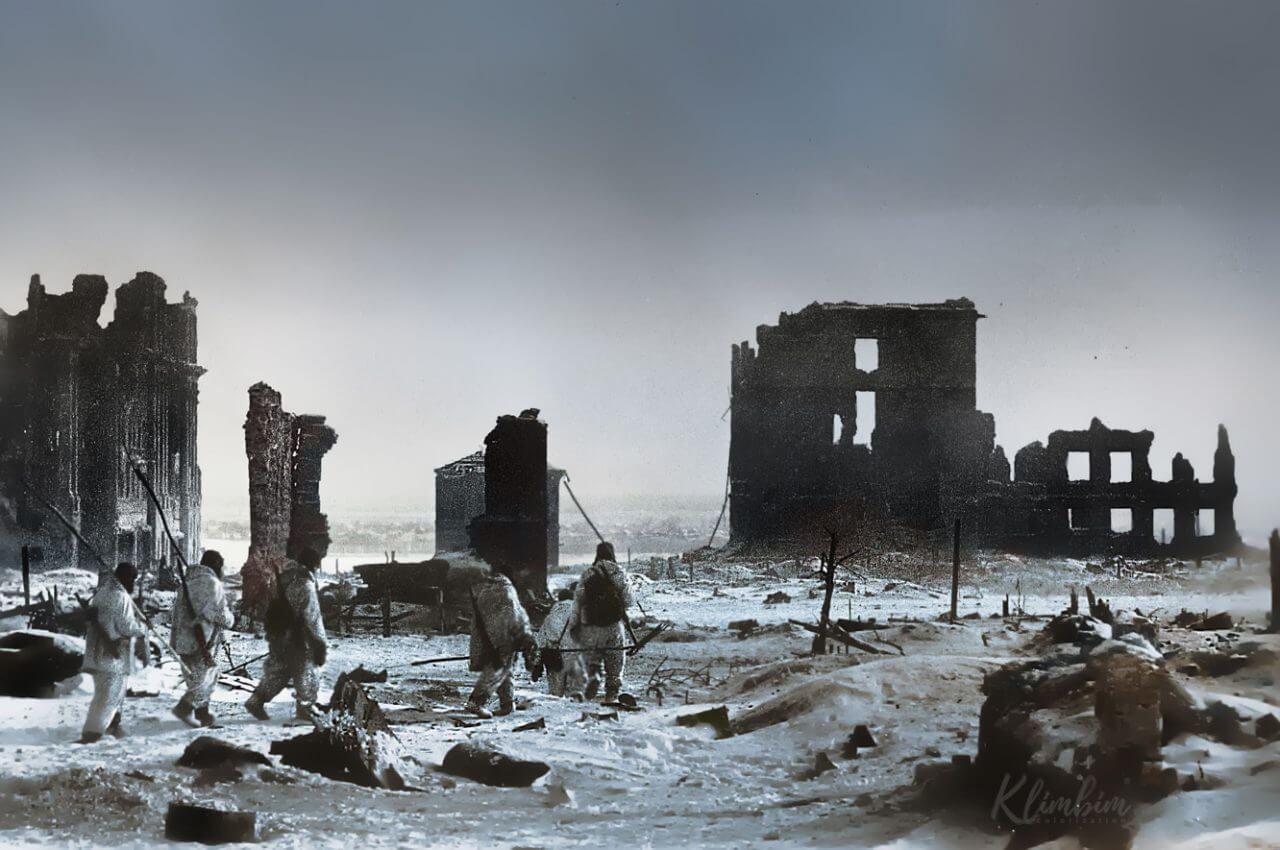| 1943 |
In 1943 the Axis start losing on all fronts. They are still a force to recon with but their power seems to be broken.
On the Eastern Front te German 6th Army at Stalingrad is still encircled by the Soviets under Zhukov. The Germans hold on for one more month but are forced surrender by the beginning of February. Estimations say that the Germans lost close to million troops, killed, wounded, or captured during the battle Stalingrad. The Soviets suffer over 1,2 million soldiers killed or wounded. A hard-fought victory.
In North Africa, Commonwealth troops capture Tripoli from the Italians. The Germans on their hand, beat the U.S. army at the Battle of Sidi Bou Zid with the German Panzer Army. The beaten U.S, Army is quickly reinforced with troops from the Commonwealth. The combined forces are able to force the Germans into retreat a few days later following the Battle of Kasserine Pass. From that moment on the Axis are forced to remain in retreat and on May 13th the German Afrika Korps and Italian troops are forced to surrender, ending the war in North Africa.
In February, the battle for Guadalcanal is ended in the Pacific, when the Japanese evacuate the island, ending 6 months of harsh fighting on land and sea.
In March Greek Partisans and villagers are able to force an Italian battalion to surrender at Fardykambos. The Italians are also forced to abandon the town of Kardhítsa a few days later but only after destroying most of the houses and killing forty citizens. In the beginning of June, the Italian Army is beaten by the Ellinikós Laïkós Apeleftherotikós Stratós (Greek Liberation Army). After which the Italians are no longer really active in the region. The Germans take over and commit large war crimes. End September the 1st Mountain Division kills over 5,100 Italian military internees of the Aqui Division who resist being disarmed on the Greek island of Cephalonia. In the beginning of October, the same division is responsible for the Lyngiades massacre in northwestern Greece. The 117th Jäger Division (Wehrmacht) kills all adult males from Kalavryta, before burning the town in December.
During the beginning of July, the battle of Kursk starts. This battle will be known as the largest tank battle in history. Although the Germans are able to destroy massive amounts of tanks, they are not able to beat the Soviet numbers. After Kursk, the Germans are forced into retreat, losing 54,182 casualties, killed, wounded, and captured soldiers. 760 tanks and assault guns are lost. The soviets loose at least 177000 casualties and an estimated 3800 tanks and other vehicles.
Halfway July the Allied invade Sicily, capturing the island when the Axis evacuated the island a month later. During the campaign Mussolini is arrested and replaced as the Italian leader. In September, the Allies invade Italy with landings at Salerno. Italy surrenders to the Allies and German troops rush in to capture Italy. In some cities a revolt breaks out against the Germans. Like in Naples where a revolt is able to chase the Germans out of the city. A few days later the U.S. Army reaches the city. Halfway October, Italy becomes allies with The Allied and declares war on Germany. Italy becomes a battlefield between Germany and The Allied.
By the end of September, the Australian Army lands on New Guinee. The battle for New Guinee will last for the rest of the year. Two months later, in the beginning of November U.S, Marines land on the island of Bougainville. Later in November U.S. Marines land on Tarawa.
The year ends with the destruction of the German battleship Scharnhorst by Allied ships during the Battle of the North Cape. This is the last big sea battle in the European area.

